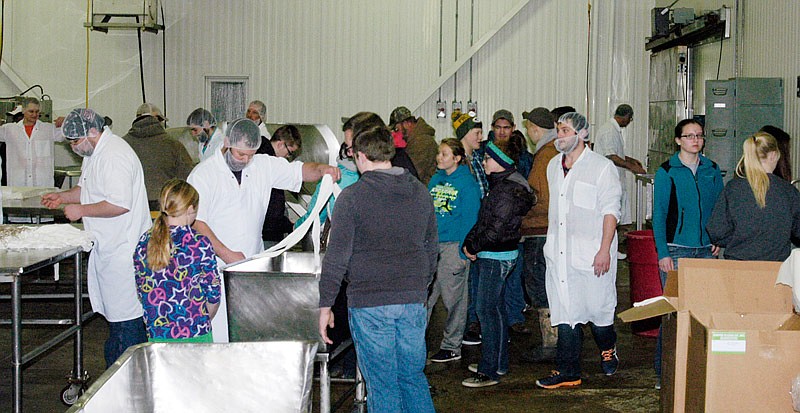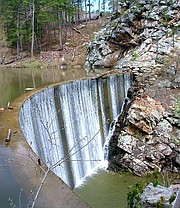Members of 27 different 4-H and FFA organizations swarmed in to Burgers' Smokehouse on Saturday, three miles south of California, beginning when the doors opened at 6:45 a.m. The purpose was to choose one or more of the about 600 fresh hams to cure.
Some of the hams are cured for consumption, others for competition in one or more of the various county fairs and some will go on to the Missouri State Fair. The fresh hams average about 25 pounds each with the cured hams weighing in the 19-20 pound range.
Although most of the young ham curers were from the central Missouri area, some were from clubs and chapters as far away as Hermann, Richmond and Lamar. Many arrive early to avoid conflicts with the numerous school sports tournaments and other activities and events.
After selecting one or more hams, most of the youth begin the curing process by right at Burgers' by applying the "cure," a mixture of salts, brown sugar and black pepper. The hams are rubbed down with the mixture, with a few handfuls put on the meaty part on top. The ham is then wrapped in butcher paper, placed in a stocking net (similar to cheese cloth) then hung on a rack. After about two months, the hams should be taken out of the butcher paper, put back in the net and hung up again. The curing process should be completed and the ham ready by the end of July, just in time for entering in the ham competition at the area fairs.
The youth from Morgan and Moniteau counties usually leave the hams at Burger's, while those from more distant areas usually take them home to hang and cure. About three dozen hams were picked up a day early by local clubs which apply their own cure.
Getting the youth started on ham curing is one of the many things the local business does for the extended community. This effort on the part of Burgers' Smokehouse is important, since it helps preserve the knowledge of how to preserve meat without the major use of modern technology, such as freezers and vacuum sealing.
Curing or preserving pork, primarily using salt, has been done for at least the last 4,000 years. It is not as widespread a meat preservation method as it might seem to be to those in this area. Hams are cured in this fashion in southern Europe, parts of southern China and the south central parts of the United States. Settlers from Europe brought the practice to the United States.
When E.M. Burger and his family began curing hams for their own use in the 1930s, they used a recipe for dry cure brought from Germany by his mother. Since extra hams could be sold, the family increased the number cured until a building was constructed for the purpose in 1952.
In the 67th year of Burgers' Smokehouse, the company is known around the world for its meat products.



